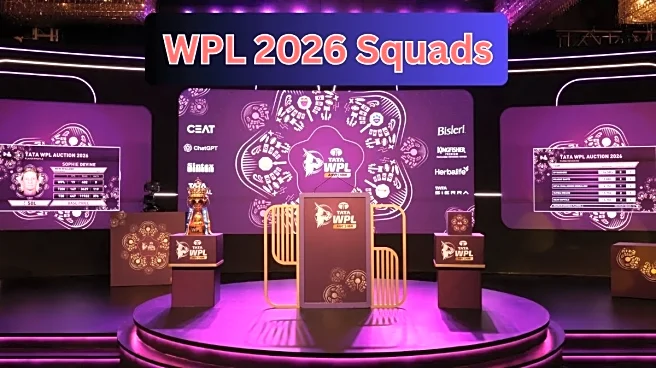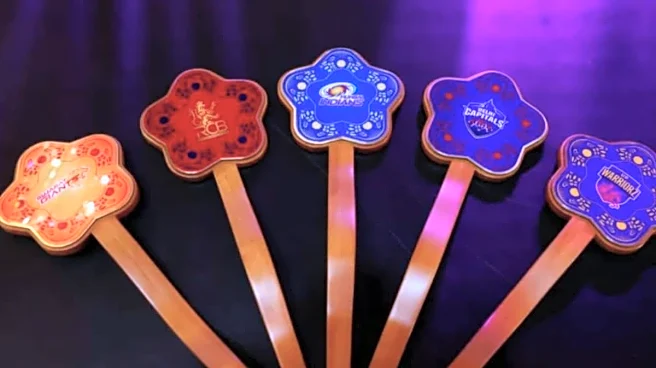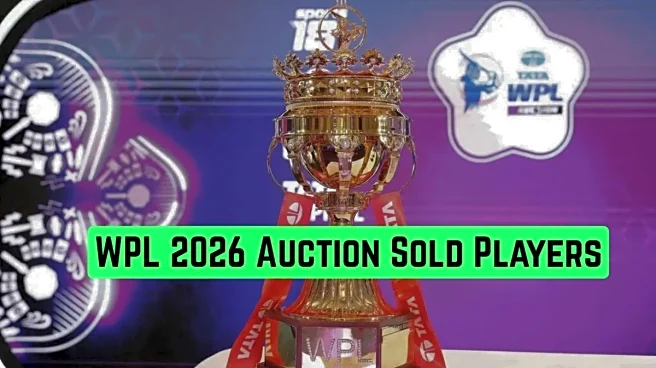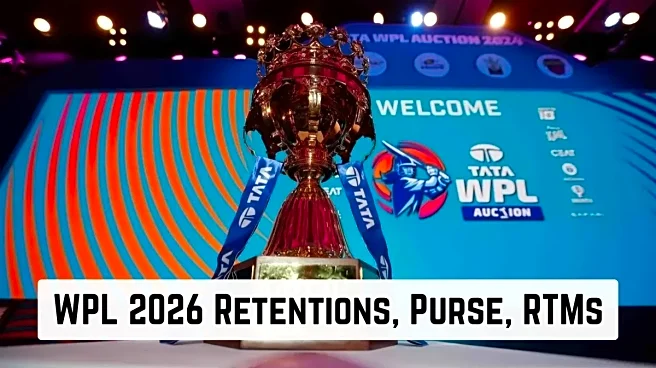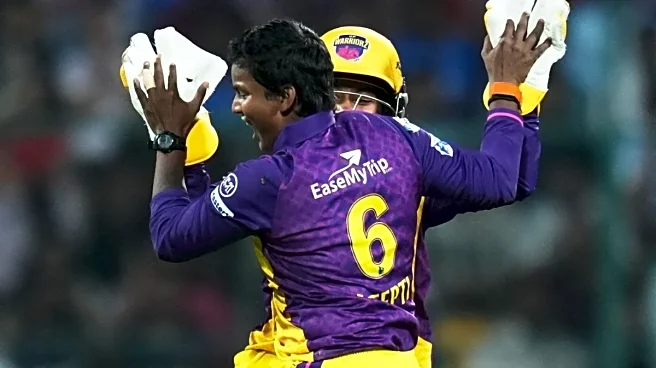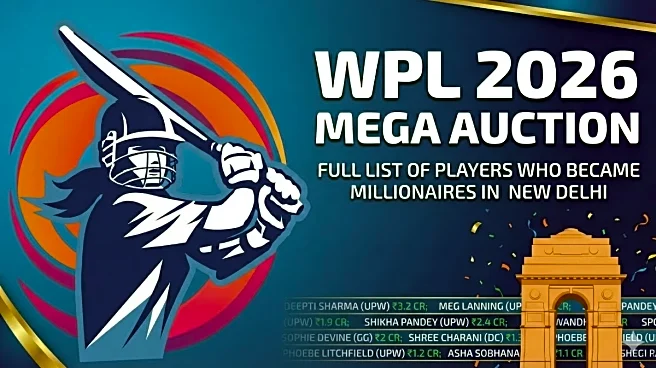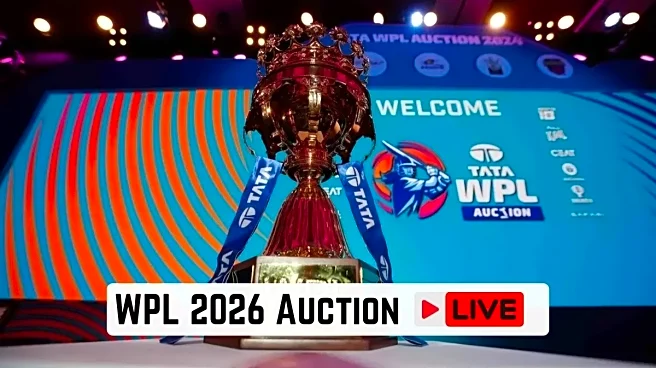As far as the life of a sporting league goes, the Women’s Premier League could be seen in that age, right at the end of their teens. It’s when you are an adult but don’t feel like one, so you allow yourself
to be a bit more adventurous and instinctive — knowing the pitfalls of a misstep but not caring much about it anyway.
That showed in how the WPL 2026 auction went about in New Delhi. Rs 40.8 crores were spent, 67 players acquired, with each team bravely taking its own true direction.
That meant that some came out on top as the true ‘winner’ of the six-hour sojourn, like the UP Warriorz, while some really struggled. Gujarat Giants, for one, looked worried about engaging in too many bidding wars, which left them looking a bit clueless at some stages.
But that didn’t mean the auction wasn’t entertaining.
In the first half-hour alone, Women’s World Cup player of the match Deepti Sharma nearly went unsold, stunning the entire room. Delhi Capitals almost landed her for her base price of ₹50 lakh before UP Warriorz dramatically triggered the first-ever RTM in WPL history, matching DC’s final offer of ₹3.2 crore — making her the most expensive buy of the day.
DC were aggressive and overall quite shrewd early on. A lineup of Laura Wolvaardt, Shree Charani, Chinelle Henry, and a next best thing to Deepti in Sneh Rana, all coming in the first couple of hours, was excellent business.
Their owner, Parth Jindal, was as intrepid, declaring in his press conference that Wolvaardt won’t be the captain because the team wanted an Indian to take it (clear hint at Jemimah Rodrigues?). He also made the biggest announcement of the day.
“I am pretty sure BCCI is planning to add more teams in the near future. One should happen soon,” he said. “With that, we can move to a home-and-away format.”
The RTM continued to generate regular doses of drama, even as the nascent-stage feeling remained palpable in the auction’s conduct.
There was a nice touch of music and beating-heart sound effects whenever tension built up. But often, auctioneer Mallika Sagar gave introductions to players which seemed to come right from an AI-generated cheat sheet.
Perhaps calling Sophie Ecclestone ‘a left-arm spinner who makes every match her own masterstroke’ had its effect, and UPW were able to make her the steal of the auction for Rs. 80 lakhs.
World Cup Impact
The auction began with a mention of India’s 2025 World Cup triumph and a round of applause for the Mumbai Indians and India captain Harmanpreet Kaur. As it happened, the effects of the event continued to show in the proceedings.
The five varied teams seemed to have moved on from the obsession for Australian players that once existed, which often ignored their form and fit in the team. Alyssa Healy, whose team lost the semi-final to India, was the only one to go unsold in the marquee round, while others like Alana King, Darcie Brown, and Laura Harris also did not find any buyers.
Mumbai Indians, given the strength of their core, remained clinical, surgically picking key pieces and going big only when needed, like Rs. 3 crore for Amelia Kerr.
“Very happy to have the same core back. Sometimes people underestimate that because you don’t have to start the competition with so many moving parts,” coach Lisa Keightley said. “We were pretty much on the limit with Amelia, but we think she’s worth it.”
Royal Challengers Bengaluru’s tactics were equally clear. They targeted bowlers with specific skills to augment the 2024-winning foundation.
Their coach, Malolan Rangarajan, was one of the many to reference Kapil Dev and the 1983 men’s World Cup, to explain the growth of the WPL and why the most expensive players’ lists were still dominated by non-Indians.
“The IPL is 18 years old,” he said. “WPL is in its nascent stage. What happened in Mumbai will be a catalyst for change. It was Kapil Dev, MS Dhoni and now Harman and the girls. The uncapped players don’t get enough exposure in domestic cricket, which they get at MI, RCB, etc. There will be a slight leaning towards the overseas players for the moment. But soon Indian players will be the most expensive, more generally.”
Unlike some previous editions of both IPL and WPL, the accelerated part of the auction was truly rapid. This is where the Giants did most of their shopping, making a balanced team with choices like Yastika Bhatia and Georgia Wareham.
In a way, the mega auction wasn’t entirely mega. There weren’t any record-breaking, eye-watering buys, mostly because the budgets weren’t huge and there were still only five teams.
The references to men’s cricket were still avoidable, and teams’ strengths were still judged by non-Indian players and coaches. Still, there were enough reminders of the fact that the WPL is growing rapidly, even if it’s not particularly linear.
Lisa Sthalekar, the Australian mentor of the UPW, summed it up beautifully when asked about the change she felt this year.
“Look at all of you,” she said, pointing at the mob of media mics and flashing lights. “That’s the prime example. It used to be one or two of you, and now I am absolutely crowded by recorders!”


